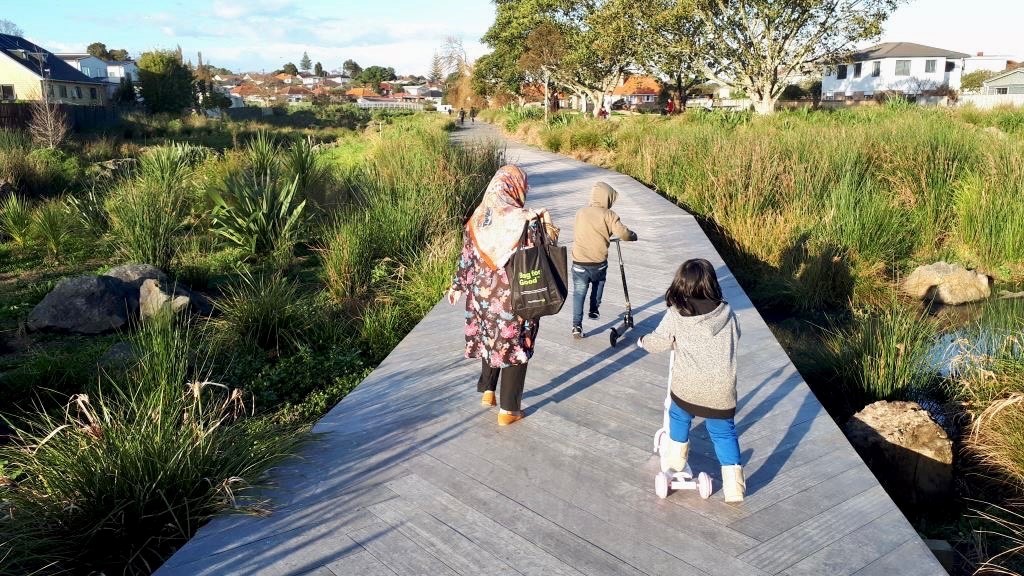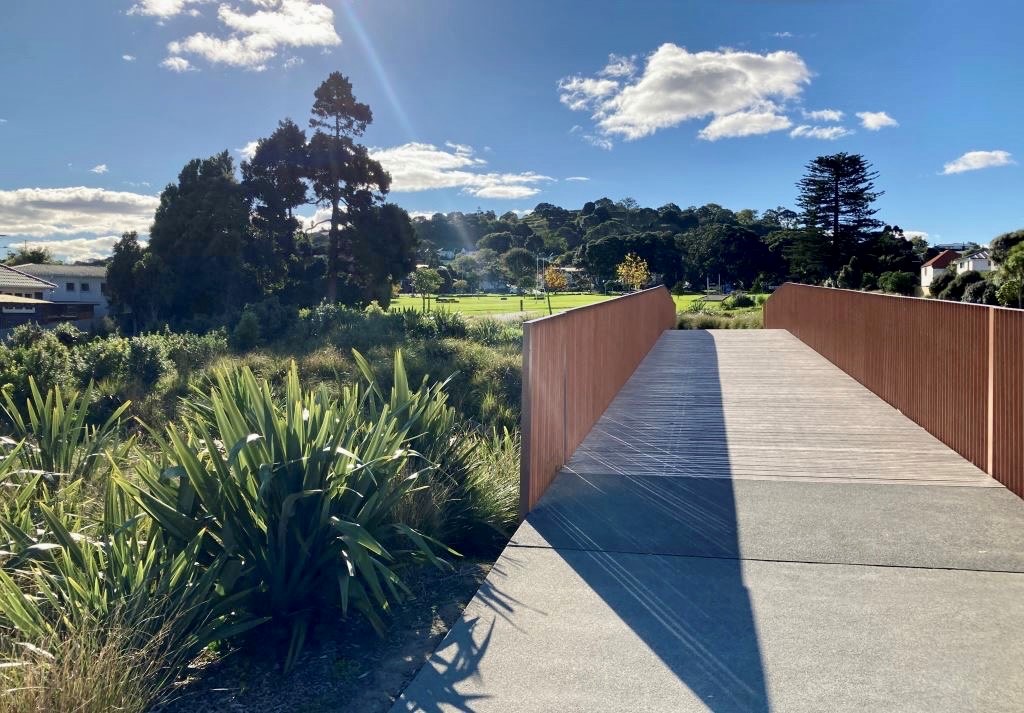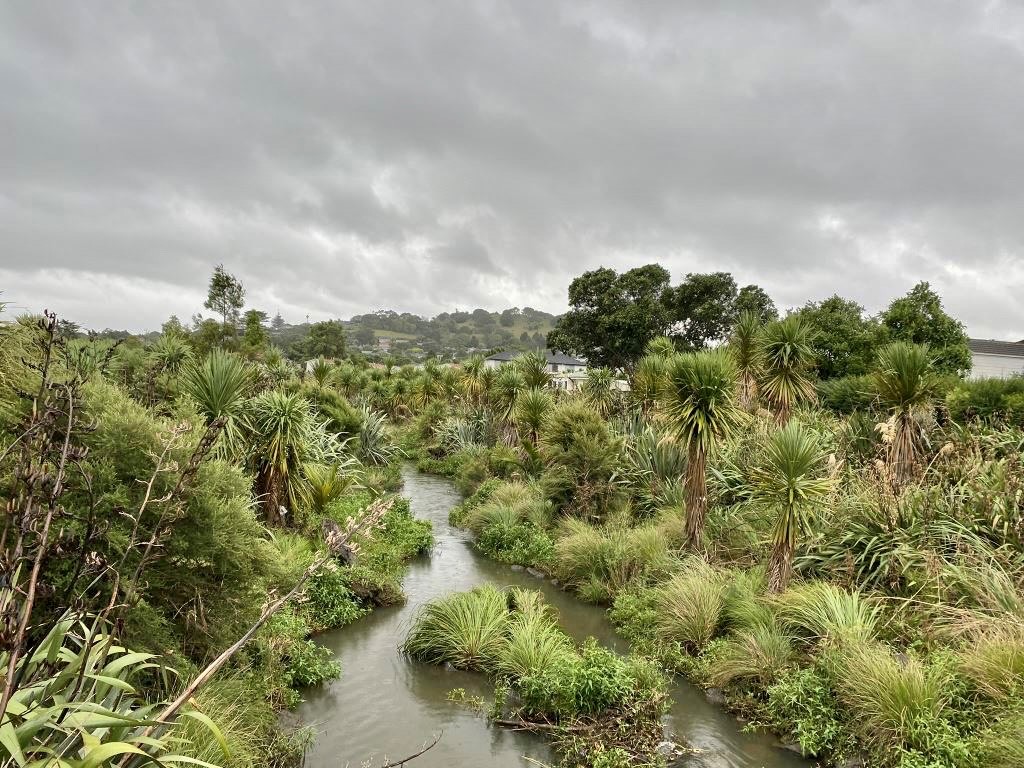NZ Sustainability
Building Back Green – Why We Must ‘Let Nature In’
Dean Spicer
Head of Sustainable Finance
ANZ New Zealand

Auckland's Te Auaunga Oakley Creek Project - photo Jay Farnsworth
With the Auckland Anniversary weekend floods and landslides, as well as the terrible destruction of Cyclone Gabrielle, 2023 will be a year to remember for many – for all the wrong reasons.
It feels like there has been a noticeable shift in our natural world, and as we contemplate how we should rebuild, there’s a growing sense there needs to be a reset.
These extraordinary record-breaking weather events are no longer the exception, but rather likely to be the new norm.
Finance Minister Grant Robertson summed it up well after touring a ruined electricity substation in Hawkes Bay a few days after Cyclone Gabrielle.
“There are difficult conversations ahead for New Zealand about exactly where we all live, and the infrastructure that’s required,” he told reporters - and I’d agree.
Part of those difficult conversations needs to be a change in the way we think about infrastructure – whether that is water, transport or communications.
In a warmer world, the risk to infrastructure has increased - so too has the cost of maintaining it. That’s why we need to be smart about how and where we re-build after events like floods.
"[The finance sector] must act as a matchmaker between those needing funding for green infrastructure... and investors who are not only interested in long-term financial returns, but also contributing positive societal impacts."
Dean Spicer, Head of Sustainable Finance, ANZ New Zealand
For our transport, water and communication systems to deliver value for generations to come, they must be cost-effective and durable.
Rather than building back bigger and stronger – often our first response after events like these – we need to think more about their long-term resilience.
Instead of fighting against nature – which, as we have seen, can be futile - we must work with it, factor it in, and give it the space it needs.
A fantastic example of this is Te Auaunga (Oakley Creek) in Auckland.
It runs 15 kilometres, from the suburb of Hillsborough through Mount Roskill, Owairaka and Waterview, before entering the Waitematā Harbour.
Originally a swamp, the stream’s catchment was drained and channelled, first for farming and later for housing.
As a result, it was extensively modified and became heavily polluted, destroying much of the area’s rich ecology.
With intensive urbanisation and the channelling came increased flooding, and more than 100 homes along the stream were frequently at risk.
About ten years ago, working closely with local iwi and community groups, Auckland Council’s Healthy Waters team came up with an enlightened redevelopment plan.
Along a 1.3 kilometre section of the stream the existing concrete channel was replaced with a wider, naturalised stream channel, and planted with hundreds of thousands of native plants – trees, ferns and flaxes - grown at a nursey set up at a local school.
This increased the stream’s capacity while also restoring its ability to soak water naturally into the ground.
New cycle paths, walking trails and play spaces - including a beginners’ BMX track - were also part of the project, which included extensive community engagement.
Over 30 unemployed local youth were trained and employed during construction and to maintain the project.
As a result, there was a decrease in the flooding risk to nearby homes, opening up more than 300 sections in the vicinity to more intensive housing development.
That doesn’t mean the area avoided flooding in January – some homes were inundated – but there was significantly less damage than would have previously occurred.
The record flood event in January vastly exceeded the 1-in-100-year flood capacity of the Te Auaunga project, and Auckland Council is now looking at recalibrating its models.
The council wants to expand the flood-resilient areas on each side of the stream, aware that infrastructure will need to be able to handle even more extreme conditions in the future.
The native planting used at Te Auaunga is well suited to being flooded - within a few weeks it bounced back, while organic debris was left to rot away, rather than needing to be cleaned out.
While climate resilient infrastructure is lower risk, and is cheaper to insure, it also needs to provide greater value to the community than the infrastructure it replaces.
For example, sports playing fields are increasingly being designed to deliberately flood during heavy rainfall.
This gives the excess water somewhere to go - a kind of holding tank - and helps slow down runoff, reducing flooding risk to nearby homes, and those living downstream.
With 15 similar projects planned as part of its accelerated ‘Making Space for Water’ plan, which estimates suggest will cost over $1 billion, Auckland Council is thinking long term.
It has come to the realisation that although these types of projects are expensive, over time they will be more cost-effective, through the damage and disruption they prevent and the environmental and social co-benefits they deliver.
While traditionally funded from public budgets, projects like these will need significant investment in the years ahead, which creates the opportunity for private capital to be involved through impact investments.
Green Bonds – like the $500m, 30-year bond issue ANZ jointly lead for Auckland Council in 2020 – are a great way to raise capital for new and existing projects with environmental benefits.
Nature-based green infrastructure projects are also a perfect fit for this, as they can result in more sustainable land use, cleaner water, and greater biodiversity.
All sectors have a role to play when it comes to climate change adaptation, but the enabling role finance can play puts it in a unique position.
More than ever it needs to act as a matchmaker between those needing funding for green infrastructure – like Auckland Council - and investors who are interested not only in long-term financial returns, but also contributing positive societal impacts.
Working together, adaptation represents an opportunity for New Zealand.
By building back green we help ensure the sustainable growth of our cities and towns, while also enhancing the natural environment and improving people's standard of living.
As a nation, it’s an opportunity we can’t afford to miss.
RELATED ARTICLES
NZ Business
Act Now or Pay (Much More) Later: Warning on Auckland’s Water Woes
NZ Sustainability


